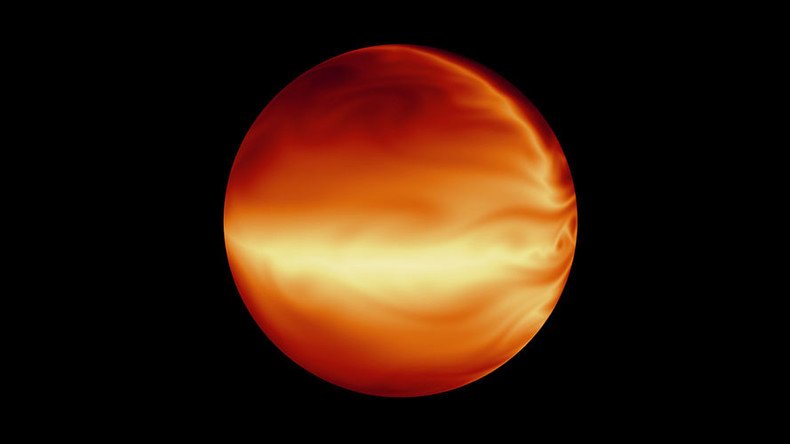NASA simulate wild orbit & dramatic climate of ‘chemical cauldron’ exoplanet (VIDEO)

The orbit of one of the most volatile exoplanets known to man, which can see temperatures rise and fall by hundreds of degrees in a matter of hours, has been tracked by NASA scientists, who visualized the wild temperature swings in its atmosphere.
Outside of the solar system there are close to 2,000 exoplanets, many of them known as boiling hot Jupiters, due to their gaseous atmosphere and close proximity to fiery stars.
However, a planet 190 light-years from Earth has caught the lense of NASA’s Spitzer infrared space telescope because of its “wildly eccentric” 111 day orbit around its star.
According to NASA, the huge orbital swing of the hot Jupiter known as HD 80606b sees one side of the already roasting planet shoot up by 815 degrees Celsius (1,500 degrees Fahrenheit) in less than 24 hours.
“As the planet gets closer to the star, it feels like a burst of starlight, or radiation. The atmosphere becomes a cauldron of chemical reactions, and the winds ramp up far beyond hurricane forces,” explains astronomer Gregh McLaughlin, co-author of a study of NASA’s Spitzer Space Telescope.
Using data from Spitzer Space Telescope, which picks up heat and radiation invisible to the naked eye, NASA have been able to visualize the rapid and inhospitable climate change on HD 80606b.
The US space agency shows that at the end of each orbit the exoplanet swings “feverishly close” to its star, resulting in massive heat storms on its side. Experts believe the gas giant is an example of a migrating planet, which will one day see its orbit become less pronounced due to the gravitational pull of surrounding planets and stars.
More than twelve years after it was first launched, the Spitzer telescope has beamed home images from space previously undocumented, such as the infrared discovery of Saturn’s largest ring.













